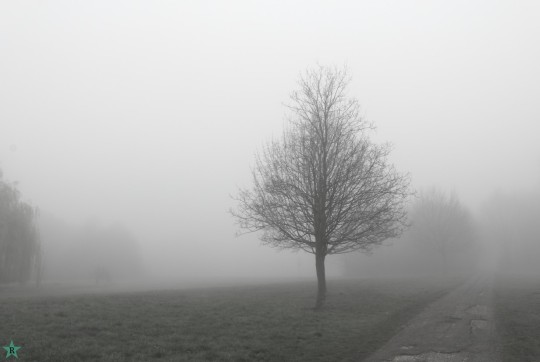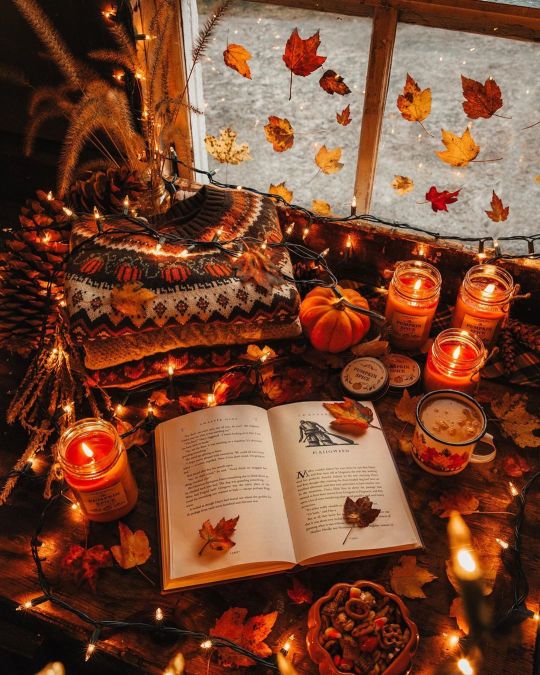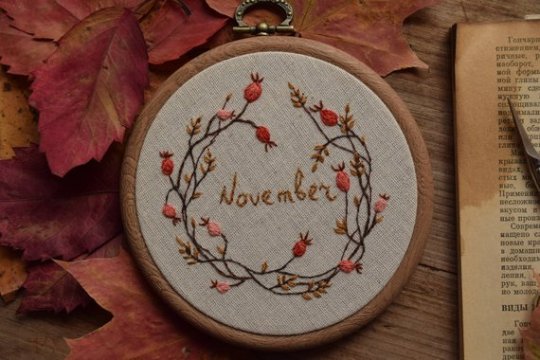Text
Hagging Out: March
–

My celebration of the Equinox was two fold. Most importantly I drown a Morana dolly in the creek in the woods behind the house, and secondly I baked.
The drowning of Morana (or Marzanna, or Marena, or Mara, or Smrtka … ) is an old Slavic tradition and the beginning of my devotional year. On the fourth or fifth Sunday of Lent, depending on the region, an effigy of the goddess is thrown into the river to drown; sometimes she is also burned. We know that people have been drowning effigies of the goddess since at least 1420, when it was forbidden by the Catholic church, but probably for much longer. It is a misconception by many that Morana is only a goddess of winter and death.
“However, many historical sources and traces of her cult (particularly in the West Slavic beliefs) show clearly that the cold winter is only one of the faces of this goddess. After getting rid of the winter effigy, another similar one was being brought up in a procession around the villages and fields - it was a symbol of spring, the same goddess being reborn after the winter phase and waking up nature’s vital strength for the upcoming growing season. Many of such informations survived in countless folk songs and rituals.” –Lamus Dworski
This is the first year that I drown a doll that I made the preceding year. Before this I always made a doll at the equinox to drown. This year the doll that I made to symbolize Morana’s rebirth last year was used in every seasonal ritual and in the end drown. I plan on doing this yearly going forward.

This year’s dolly will be showing up in many, many posts.

As part of the death and rebirth ritual last year I made a set of Morana prayer beads representing the dark half of the year. This year I made a set representing the light half.

Another addition to the ritual this year was spending at least a half hour every night the week before I drown Morana in meditation and prayer with her, annointing her with oils and holy water and burning incense.

The second thing I did to celebrate the equinox was bake! First I baked Slavic spring birdies to “release” into the wild. I released the majority of them the Thursday before I drown Morana.
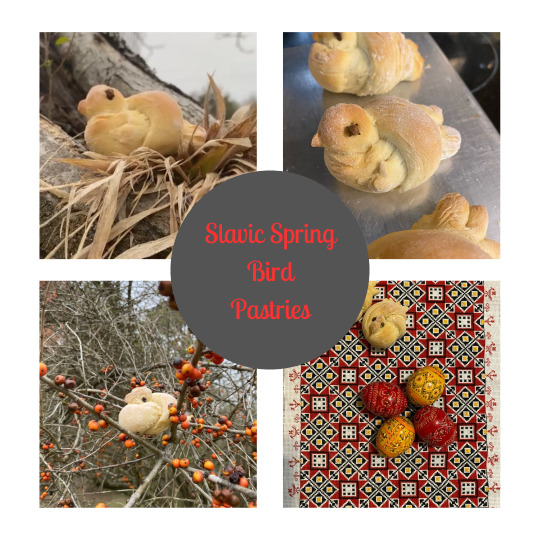
“Even before the leaves bud out, as the snow begins to thaw, one must invite–indeed coax–the spring to arrive. If one simply waited, Spring (being willful) might not choose to come, and then, with last year’s food bins already almost empty, one could not survive. To bring the spring proactively, Russian mothers baked bird-shaped pastries in early March and their children clambered about setting these little larks and snipes out like duck decoys on the rooftops, fence posts, and snowless patches of ground, hanging them from trees and bushes or even tossing them into the air, meanwhile singing such songs as:
Larks, Larks, Give us Summer,
We’ll give you Winter,
There’s no food left for us”
–“The Dancing Goddesses” by Elizabeth Wayland Barber
In an earlier time the Ukraine and other Slavic nations, on the Holy Day of the 40 Martyrs, (March 9, O.S; March 22, N.S.), the return of the birds in the spring was celebrated with special spring songs (vesnianky). Birds made of dough were also baked representing the larks that were migrating back to the north.
I started releasing the birds into the wild with my friend @msgraveyarddirt a few years ago. I was delighted to find a picture in a book on the traditions of the Znojmo region of Moravia (where my great-grandparents are from) earlier this year and realize that the birds are indeed one of those pan Slavic traditions.

This morning before I drown Morana, I woke up at 3 am and could not fall back asleep. So I decided to bake. I began making my first manzanec and while it was rising went out to do my Morana ritual.
“Pavla Velickinova, the head of the public diplomacy department at the Embassy of the Czech Republic in Washington, D.C., says mazanec is one of the oldest documented Easter foods in Czech history. It comes from the expression, “mazat,” which means to anoint, she says. This is why it’s baked on White Saturday, the day that reminds Czechs of the last rites of Christ.
This tradition of making mazanec as an Easter treat dates back to the 15th century, says Karen Von Kunes, a professor of Slavic language and literature at Yale University.
But even before that, she says, people across Europe baked this kind of bread around springtime. “In Europe, it was a custom to celebrate spring with making this … type of pastry,” she says.” –NPR
The site where I found the recipe said that the cross represented the sun, unlike the NPR quote above. In my personal devotions I could certainly see it representing the wheel of the year. The dough is nearly the same as the vánočka (Czech braided Christmas bread) that I made for štědrovečerní večeře (Czech Christmas Eve dinner). The smell of lemon peel and vanilla is forever forward going to be related to the holidays.
@msgraveyarddirt thank you as always for hosting #haggingout. I’m glad we revisited this theme as my yearly rituals are constantly growing and evolving. ( I in no way expect you to publish this until the 29th–I just wanted to get it all down while it was fresh in my mind.)
51 notes
·
View notes
Text
I'm doing a kind of winter solstice celebration today. It's a few days past but it's just to mark the occasion. I didn't have time to really think about it a lot.
Having a slow cooker pumpkin curry but subbed in some kūmara because it's strongly associated with this season (unfortunately it's also $15/kg this year which makes it the most expensive vegetable available).
We have a fancy dessert.
Going to try a spiced coffee!
Invited my Mum over.
I like to do gift but wasn't sure what to do but the kinder surprises at the supermarket are supposed to be "ice" themed so got them.
Maybe have candles, I like light symbolism at this time.
Also a book I ordered online for my husband arrived and I gave myself a macrame kit I already had. Like, activities for being indoors for winter.
I was given a bunch of flowers that contained dry flowers so hung them up seperately - seems appropriate since there are so few flowers now. BUT also the bunch of flowers and leaves was all from her garden so it's all appropriate right now. The rest are in the hall.

Oh, and I bought some mead, which was an unexpected find at the supermarket. Shh, it's a secret!
I guess the idea of the winter solstice is to prepare for the cold couple of months coming, while also celebrating light. Also about hope, and faith in the sun actually doing it's thing. Maybe appreciating the small changes and believing they mean something.
7 notes
·
View notes
Text
Hagging Out: кутя [kutya]

She cooks the whole grains in water, then dresses the softened kernels with honey and poppy seeds. Sometimes she adds nuts, or dried fruit, or both depending on the family’s personal recipe and what’s available. Over time she becomes more reliant on experience than memory, adjusting the flavor and consistency of the dish by taste and sight rather than hard measurements or fading recollections.
The ceremony of kutya is synonymous with Ukrainian Christmas, but the rite predates both Christmas and Christianity. It’s been suggested that the dish is approximately 3,000-years-old - created at the very beginning of grain domestication - but I suspect it’s even older. I believe the recipe’s a ritual remnant from my ancestors’ ancestors, and has roots from when we were hunter-gatherers (due to 1.) the ingredients used, 2.) the simplicity of the dish itself).
There’s significance behind every component, although original purpose and meaning of some of the elements have been forgotten, and are therefore disputed. We know that poppy seeds represented the souls of the dead (not much has changed between pagan and Christian in that respect), and honey most likely had solar attributes.
The communal sharing and eating of kutya venerated and appeased forebears, spirits, and deities that played significant roles in the lives and beliefs of my ancestors. To this day, the preparation and consumption of the sweetened cereal is almost exclusively a winter observation, although a modified version without poppy seeds called коливо [kolyvo] is prepared for funeral services throughout the year.
Christianity adopted the practice and altered the meanings of the ingredients, but it didn’t change the recipe, or bury the importance of the ritual. Sviata Vechera [Holy Supper], Ukrainian Christmas Eve, always begins with the ceremonial eating of kutya. As the dish has origins in family unity of the living and the dead it’s crucial that every household member takes part in the ancient custom; participation’s mandatory, not optional (as my non-Ukrainian boyfriend-turned-husband quickly learned).
Keep reading
133 notes
·
View notes
Text
Matki Boskiej Zielnej - Our Lady of Herbs
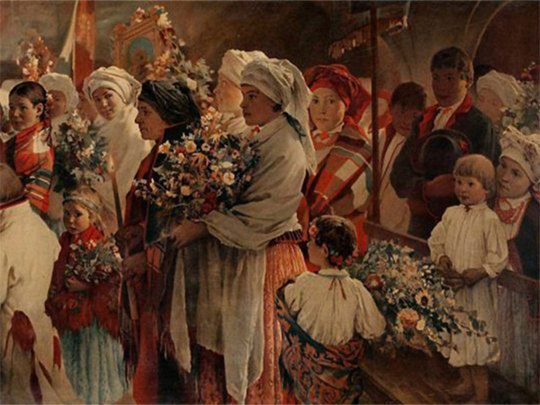
The holiday known to the wider public as The Assumption in Poland is also called another charming name, Our Lady of Herbs (the literal translation would be God’s Mother of Herbs) and counted among most significant religious holidays in the calendar of agricultural communities.
Our Lady of Herbs is the day of blessing herbs, flowers and grains. Historically small quantities of fruits and vegetables were included as well. Plants blessed on this day were believed to contain special powers - not solely because of the blessings but also because they’ve been harvested at the peak of their ripeness and full of vital energy. The blessings were also a symbolic expression of gratitude for the year’s harvest. While nowadays plants carried to the church are typically arranged in small bouquets, dominated by flowers and herbs, in the past people would often bring with them large sheaves containing many different species.
The commonly included plants vary between the regions and it seems like there weren’t any strict rules as to what should be consacrated. People would gather whichever plants were prevalent in their gardens, fields and meadows and later use them in accordance with local lore.
Blessed grain would be mixed with the rest of the grain harvest to transfer it’s special properties onto the whole of it. Alternatively it could be preserved and planted, to transfer the blessings onto next year’s harvest. Hallowed herbs were hanged in the kitchen, waiting for use - they’d be burned or brewed into teas to heal the sick (both people and animals), bless newborns (people and animals), cure fearful children and folks who believed there was a spell put on them. They could be placed under the pillow of a dying person to ensure evil forces will not get a hold of them and their spirit will get to heavens undisturbed. Before next Assumption the leftover blessed sheaves/bouquets/wreaths had to be ritually burned, as throwing them away or destroying them was seen as disrespectful. In some regions cattle would be chased through the smoke and fumigated as part of the ritual.
Other examples of uses for blessed plants:
As is common for many similar holidays the blessed plants would frequently be used to protect families from witchcraft and the household from thunderstrikes and subsequent fires.
Apples were often included in the celebration of Our Lady of Herbs, since according to a popular folk legend on this date Theotokos gives them out to people. They were believed to fortify one’s health and could be given to pale or sickly family memebers to ensure their wellbeing. They also had the power of removing temptations.
Blessed poppy could be used in rituals to end draught or to make sleepless child rest.
Saint John’s Wort, also known as „Lady Mary’s Bells” was believed to make births easier and protect the mother and child from demons praying specifically on newborns and young mothers. Shepherds should have some with them when taking cattle out to the pasture for the first time that year.
Homes could be fumigated with blessed hyssop to shield them from evil.
Seeds from blessed sunflower could be used by men in fortunetelling, to know if their wife is faithful to them.
Only witches bless white bryony! A cow fumigated by a witch with bryony will take away the milk of any other cow it meets.
Blessed mint can be placed under the bed of a dying person to alleviate their sorrow.
Overall you could bring a little bit of every important crop you planted to show gratitude and ensure continuous prosperity.
Less popular names for the holiday can be translated as „God’s Mother/Our Lady of Death”, „God’s Mother/Our Lady of Rest” and „God’s Mother/Our Lady of Falling Asleep”.
Sources: Rośliny w wierzeniach i zwyczajach ludowych. Słownik Adama Fischera by Kujawska et. al, Etnografia Lubelszczyzny - cykl roczny w życiu wsi; sierpień, 15 sierpnia - Matki Boskiej Zielnej by Muzeum Etnograficzne w Rzeszowie, Bukiety zielne święcone w dniu Matki Boskiej Zielnej w Sanockiem by Łukasz Fitkowski, Plants in bouquets blessed on Assumption Day in Orthodox churches in the vicinity of the Białowieża Forest by Łukasz Łuczaj, Archiwum Programu Historia Mówiona - Krystyna Maj, Blessed plants reported in Józef Rostafiński’s (1850–1928) questionnaire, distributed in 1883 by Piotr Köhler.
Art: Niedziela Zielna by Witold Pruszkowski
128 notes
·
View notes
Text
St. John’s Harvest 2020




“Traditionally, women collect several species of plants on St. John’s eve. These vary from area to area, but mostly include fennel, rue, rosemary, lemon verbena, mallows, laburnum, foxgloves and elder flowers. On the Feast of St. John, it is customary to gather the perennial herb “St. John’s Wort”. Since medieval times, the herbs have been hung over doors, windows and icons to keep witches and evil spirits away. In some areas, they are dipped in a vessel with water and left outside, exposed to the dew of night until the following morning, when people use the resulting flower water to wash their faces.“ – Saint John’s Eve
Saint John’s harvest 2020. First garden harvest for Sviata Vechera [Holy Supper] cooking and other ancestral/seasonal rites.
Pictured: rowan, fern, foxglove, rue, catnip, garlic scape, spearmint, culinary sage, lovage, rosebay willowherb, lemon balm, pot marigold, motherwort, elderflower & big sagebrush [aka women’s sage]
200 notes
·
View notes
Text
The start of Matariki and the winter solstice fell on the same day this year so we lit candles, had a feast of food from the Matariki market, a fancy Xmas fruitcake, and opened presents of extremely expensive Nordic socks (from the real Nordic sock company not the scam Nordic socks).
7 notes
·
View notes
Text
the grey and foggy sunrise blooms slowly before my tired eyes. it is the shortest day today - so little light and so much darkness, yet the underlying wonder of it all gives hope and makes way for joy.
some of you asked how I celebrate this time of year - and given that my path unites the traditional with the strangely personal, let me ramble here for a moment.
the winter solstice is a crucial moment for me as a devotee to Winter Mother. the two nights encasing the shortest day with their dark and cold embrace are the final moments of her absolute reign during the year. they are the darkest and the longest - and I offer them wholly to her.
Keep reading
170 notes
·
View notes
Note
What are in your opinion the best offerings for Marzanna?
I offer her the plants that survive through the winter's cold: blackthorn, dog rose hips, hawthorn, and rowan - and blackthorn wine, and quince vodka of my own making.
then chrysanthemums and thistle, nettles, lilies and lilies of the valley. ferns and yarrow, mint and mullein. devil's bolete and fly agaric, and then an array of poisonous plants whose names I'll spare you at the moment lest you become tempted to find them.
I also offer her bread and water, dark chocolate and bitter black tea; offal and blood, bones and teeth. fish, sometimes, and sour beer.
then, intimately from myself, the work of my hands - embroidery and woodwork, drawings and the cleaning of graves - and the blood from my veins, and my nightmares and trance, and ever so rarely pleasure underlined with fear or pain.
truth be told, the best offerings are simply the ones you yourself think fitting - and ones that bring you closer to Death Mother as you offer them.
178 notes
·
View notes
Text

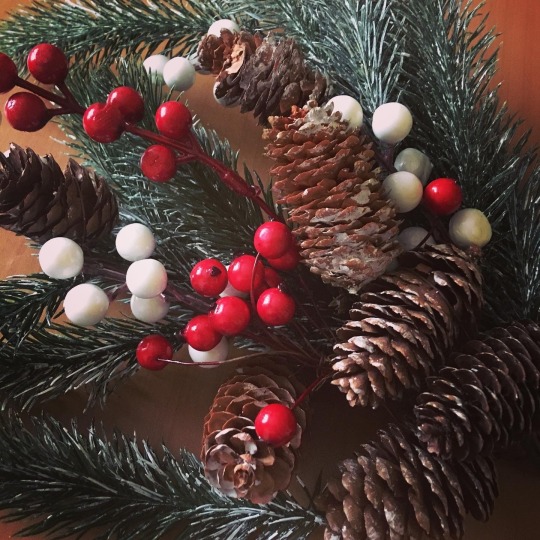
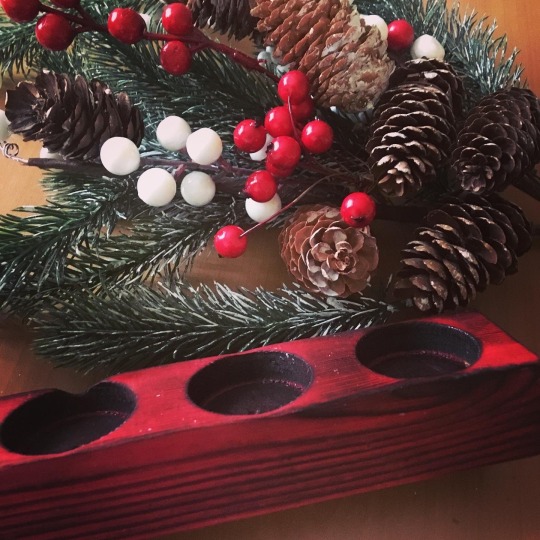

My finished Yule log.
Happy winter solstice for all you who celebrate the shortest of days and the longest of night.
32 notes
·
View notes
Text
Hagging Out: кутя [kutya]

She cooks the whole grains in water, then dresses the softened kernels with honey and poppy seeds. Sometimes she adds nuts, or dried fruit, or both depending on the family’s personal recipe and what’s available. Over time she becomes more reliant on experience than memory, adjusting the flavor and consistency of the dish by taste and sight rather than hard measurements or fading recollections.
The ceremony of kutya is synonymous with Ukrainian Christmas, but the rite predates both Christmas and Christianity. It’s been suggested that the dish is approximately 3,000-years-old - created at the very beginning of grain domestication - but I suspect it’s even older. I believe the recipe’s a ritual remnant from my ancestors’ ancestors, and has roots from when we were hunter-gatherers (due to 1.) the ingredients used, 2.) the simplicity of the dish itself).
There’s significance behind every component, although original purpose and meaning of some of the elements have been forgotten, and are therefore disputed. We know that poppy seeds represented the souls of the dead (not much has changed between pagan and Christian in that respect), and honey most likely had solar attributes.
The communal sharing and eating of kutya venerated and appeased forebears, spirits, and deities that played significant roles in the lives and beliefs of my ancestors. To this day, the preparation and consumption of the sweetened cereal is almost exclusively a winter observation, although a modified version without poppy seeds called коливо [kolyvo] is prepared for funeral services throughout the year.
Christianity adopted the practice and altered the meanings of the ingredients, but it didn’t change the recipe, or bury the importance of the ritual. Sviata Vechera [Holy Supper], Ukrainian Christmas Eve, always begins with the ceremonial eating of kutya. As the dish has origins in family unity of the living and the dead it’s crucial that every household member takes part in the ancient custom; participation’s mandatory, not optional (as my non-Ukrainian boyfriend-turned-husband quickly learned).
Keep reading
133 notes
·
View notes
Photo
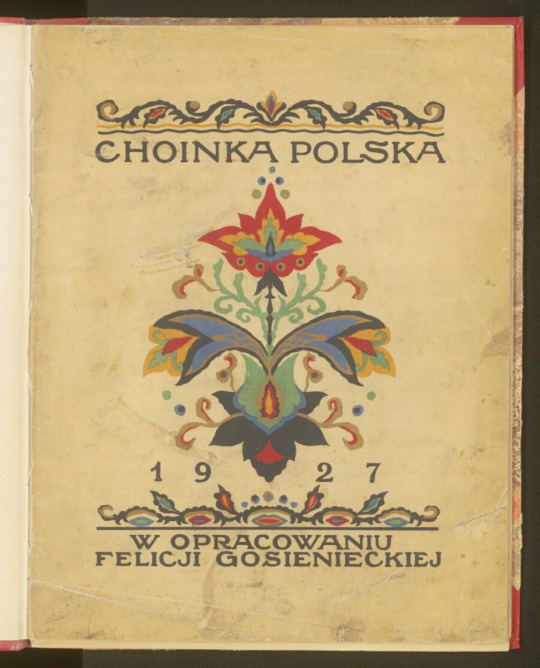

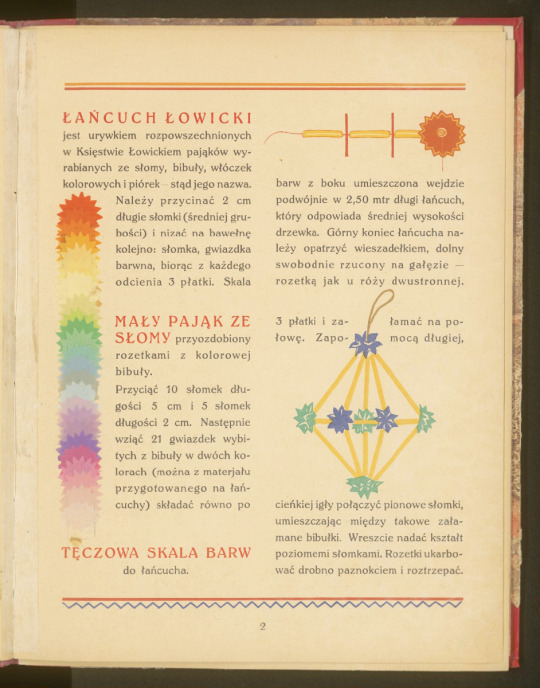
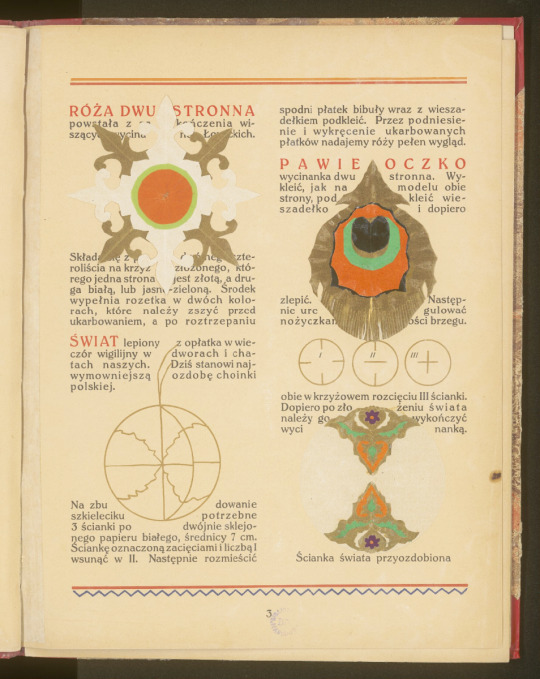
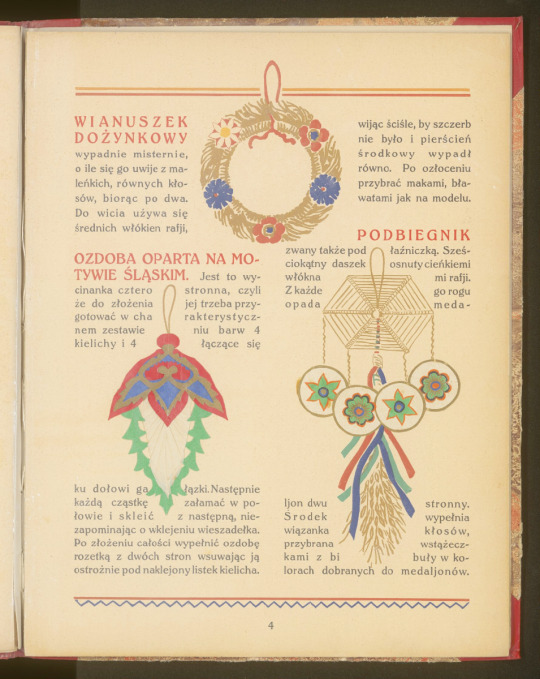




Choinka polska. Patterns of colorful Christmas decorations inspired by Polish folklore by Felicja Gosieniecka, 1927.
1K notes
·
View notes
Photo

#inktober2018 Slavic beliefs, 7/31 Turoń - a mythical creature from Polish folklore, having roots in ancient Slavic winter rites. A person dressed up as a turoń is usually accompanying groups of kolędnicy (people singing carols) during the winter season in rituals of pre-Christian Slavic roots known in English as koliada (Polish: kolęda).
830 notes
·
View notes
Text


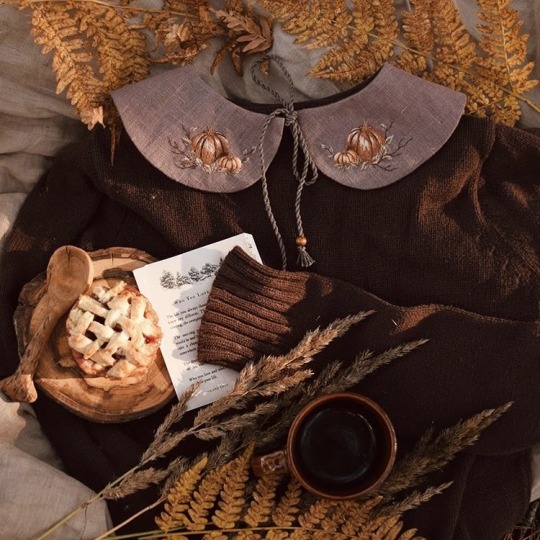

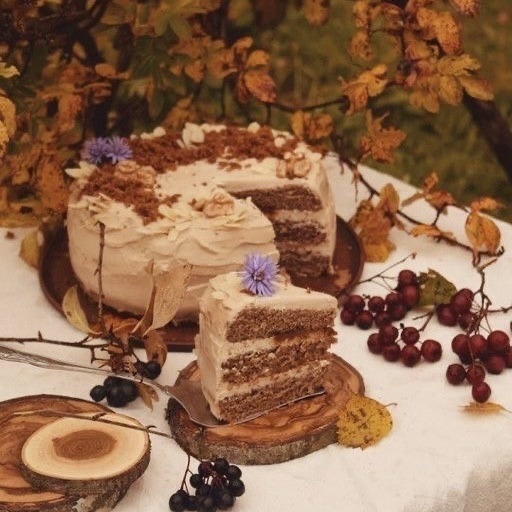
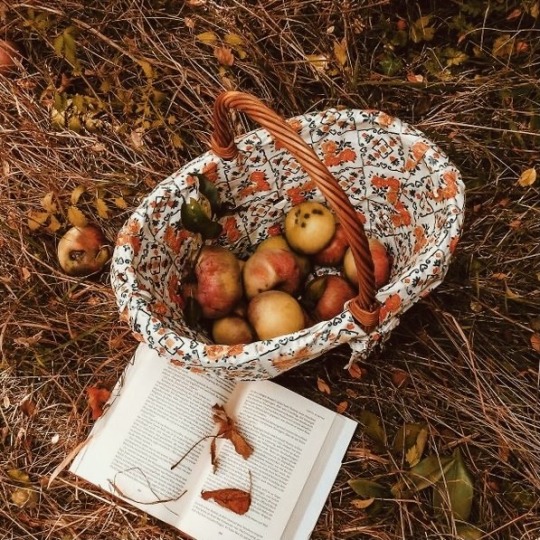
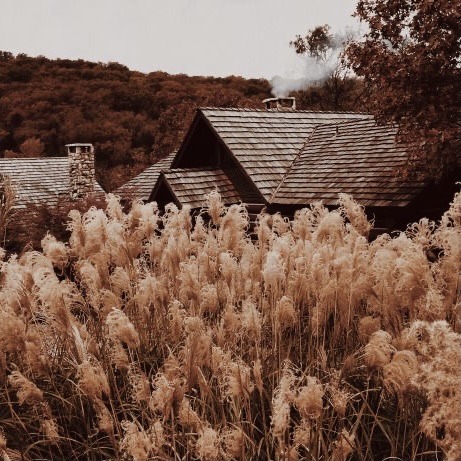


mentally I'm here...
#autumn#I have to admit that autumn doesn't seem to feel like this here#autumn is a bit of a vague season in NZ
2K notes
·
View notes
Text
Okay but like in my family my mom would send us out to collect animal bones to scatter in the yard and we'd put fake blood on the windows and she would INSIST on at least 1 scary-looking jack-o-lantern to keep the house safe from evil spirits, and we'd eat all the seeds after dinner and bunker down with blankets in the living room like we were prepping for a tornado and as far as I'm concerned Halloween is the closest our family ever came to a true religious tradition.
Like I'm not talking a "haha elf on a shelf" type holiday, I mean "my first Halloween away from home I couldn't find a pumpkin so I carved a bell pepper cause the unknown horrors of the universe are beyond my contemplation" type spiritual faith.
Halloween was the night we stayed up late amusing ourselves to distract from the constant, creeping awareness that there are some strange and terrible things in our world that we cannot explain, and I love that.
I love celebrating that I'm mortal, I'm gonna die, change is inevitable and I don't know jack shit
551 notes
·
View notes
